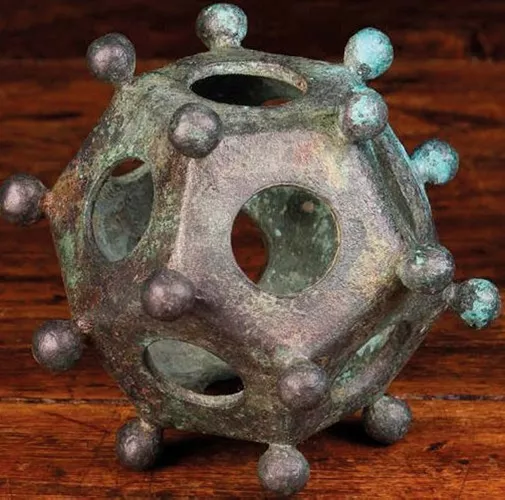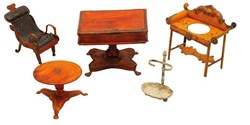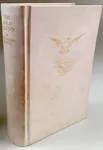
Roman dodecahedron, £33,000 at Wilkinson’s.
Since one was found as part of a coin hoard in England and discussed by the Society of Antiquaries in 1739, more than 100 others have been unearthed at sites across northern Europe. Archaeological context dates them to the 1st to 5th centuries.
But what were these strange handheld bronze or copper alloy objects cast with 12 flat pentagonal faces and ball finials to the 20 vertices used for?
As no mention of dodecahedrons has been found in written or pictorial accounts, their use is entirely speculative. There are books and websites dedicated to the subject.
Were they, as various theorists suggest, a type of rangefinder or surveying instrument, an astronomical calendar, a tool for determining the optimal sowing date for winter grain, a ‘masterpiece’ object made to show bronze-casting skills or simply children’s toys?
Certainly, given that a number have been found in coin hoards, they were much valued and valuable objects.
Perhaps most convincing – given that most dodecahedra have been found in Britain, Germany and France and none in the southern or eastern reaches of the Roman empire – are hypotheses that argue they had a cultural significance for the peoples in the formerly Gallic regions of northern Europe.
Perhaps they were used in Gallo-Romano rituals or fortune-telling?
Market value
What we do now know is how much a Roman dodecahedron might bring on the open market.
The example offered at Wilkinson’s (20% buyer’s premium) in Doncaster on December 3 measured 3½in (9cm) making it one of the larger known. The 116 recorded examples range in size from 4 to 11cm across.
No information regarding its provenance was included in the catalogue and auction house and buyer were keeping tight-lipped but, estimated at £800-1200, it took £33,000.














